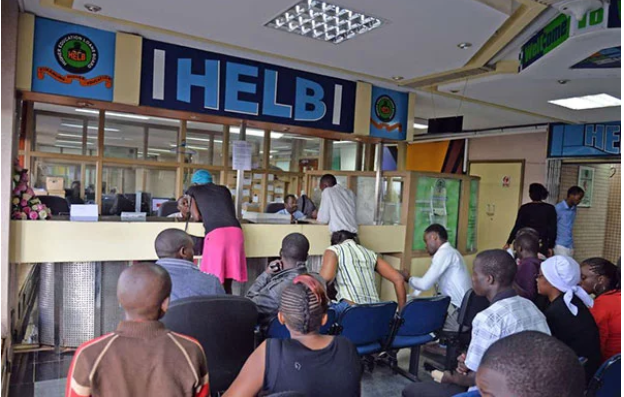How digitisation of student loans will transform lending
By christopher.owuor, March 21, 2021Educationists and beneficiaries of student loans have weighed in on the recently launched Higher Education Loans Board digital payment solution, saying it will not only among others help address the recurring delays in dibursement of funds to students, but also ensure accountability, minimise the cost of payment both to the students and the board.
Mwangi Mumero @PeopleDailyKE
As delays in the disbursement of student loans by the Higher Education Loans Board (HELB) continues to rock institutions of higher learning, the loans board in partnership with Safaricom recently launched a smart mobile payment technology that will among others help in solving the menace.
The digital platform, the board said, will be used to follow up repayments of loans, while placing part of the blame on delays of the funds to loan defaulters as some of the past beneficiaries of the loan have the ability to pay, but have failed to pay.
New HELB data has also also shown about 106, 443 former university students hav e defaulted on their loans repayment in the wake of Covid-19 pandemic that triggered layoffs, business closure and freeze in hiring.
The data shows loan accounts in default increased by 35, 561 in the six months to December with the defaulted loans increasing 55 per cent or Sh3.7 billion to Sh10.4 billion.
HELB disburses over Sh15 billion annually to over 200,000 beneficiaries countrywide in universities and tertiary institutions.
Part of the loan is channelled directly to the learning institutions to settle part of students tuition fees and accommodation fees while the rest is sent directly to the student for upkeep.
The payment technology has been rolled out in partnership with Safaricom to help HELB promote responsible spending with funds locked for specific allocations, such as tuition or library fees only accessible to the specific playbill account of the recipient’s university or other institution.
The upkeep allowance can now also be transferred into the student’s M-Pesa wallet for everyday use.
“Technology is revolutionising every aspect of our lives as well as creating efficiency and accountability.
This technology suits the digital lifestyle of students in higher education, as well as tertiary institutions,” observed Sitoyo Lopokoiyit, chief financial services officer at Safaricom Limited.
Efficiency of operations
Students can access the system through the HELB website as well as a mobile app.
They will be able to view their loan allocation, current balances, statements and make payments.
The technology is expected to create efficiencies and reduce queues during registration as students can now pay through their mobile phones.
Experts say that it will effectively help in the management and monitoring of loans throughout the loan cycles.
“This technology enhances efficiency in our operations and also enable us to step up the experience of the beneficiaries who are digital natives.
It will allow the student to access and make transactions within the loan ecosystem,” noted Charles Ringera, HELB CEO.
The technology grants the loans body visibility of funds from various sources, which it can aggregate and reconcile in real-time and report to financiers.
Learners continuing with their course will receive notifications and utilise financial planning tool on the portal, while those who have graduated can track their repayments and generate statements.
“Proper utilisation of loans and allowances is critical for a student’s life at the university.
It is a matter of survival stretching the shilling to finish the semester,” observed Felix Muendo, an outgoing Egerton University student currently on teaching practice.
Research conducted by Isabella Engede at the University of Nairobi School of Business shows that unemployment of the loan beneficiaries, uncooperativeness of some employers as well as brain drain have impacted negatively on the loan body’s ability to recover loans.
Brain drain has robbed the nation of important workers as Kenyan graduates leave the country of greener pastures abroad.
Engede observed in her research that HELB’s main focus has been ensuring employed graduates pay up.
Little attention is given to graduates in low paying jobs as well as those in the Jua Kali sector.
The study found that continued contact and follow up approach system, loan tracking control system and early warning system were the main strategies adopted in debt recovery.
It was also established that loan recovery strategies adopted have enabled the organisation to recover a higher amount in debt.
“The strategies have enabled key players, such as employers to cooperate with the loan body and increase funding of more students.
It has also strengthened debt recovery rates and boosted the revolving funds”, noted Engede, in her paper, which was part of her Masters of Business Administration work.
Among the loans products available to students are the Musoni educational loans, Kenya Commercial Bank student loans, National Bank of Kenya student loans and the Equity Bank student loans.
